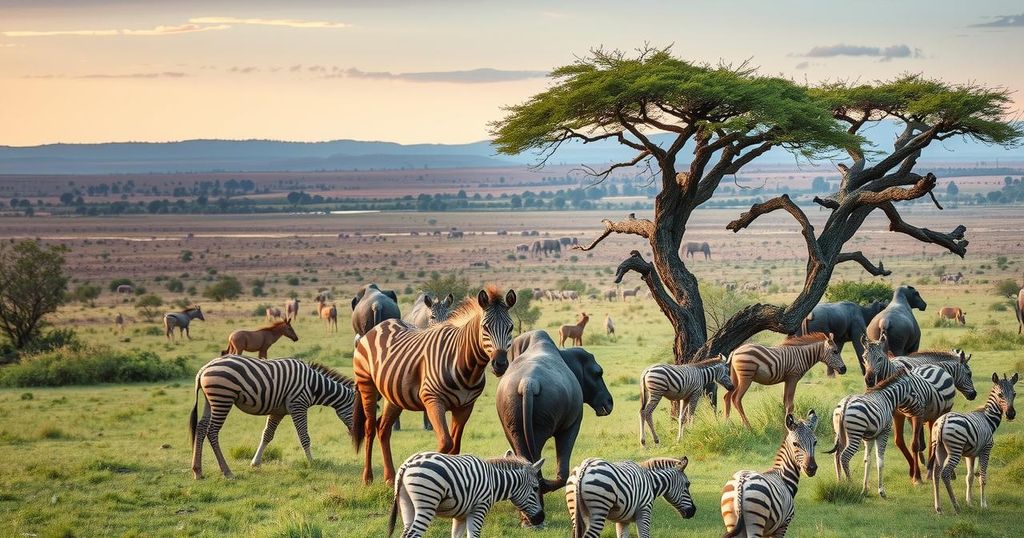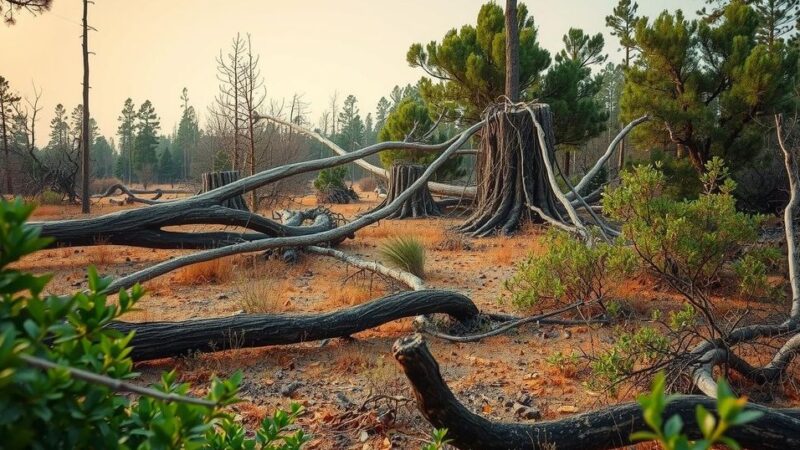Climate change is disrupting the migration patterns of wildlife in the Serengeti, particularly wildebeest, due to shifting rainfall and increasing temperatures. This environmental alteration affects the animals’ traditional movement toward the Maasai Mara reserve in search of food and water, as observed by ecologists.
In the expansive savanna of the Serengeti, a group of wildebeest stand out as they graze on the newly sprouted grass after a recent rainfall. Guide Julieth Jones emphasizes their choice to stay in this region due to the availability of nutritious pasture, contrary to their usual migration patterns. Ecologist Gadiel Tanapa notes that traditionally, during the dry season, wildebeest would typically migrate north towards Kenya’s Maasai Mara reserve. However, the irregular rainfall patterns induced by climate change are altering their behaviors significantly, causing them to forage in areas not customary for this time of year.
Each year, an impressive array of wildlife including wildebeest, zebras, Thomson’s gazelles, and elands traverse the Serengeti. They embark on a seasonal migration, moving northward to seek sustenance during the dry months and then returning south as the rains commence. Nevertheless, this age-old migration cycle is increasingly disrupted as climate change contributes to a series of severe droughts, unpredictable wet spells, and notable increases in temperature over the past sixty years, as revealed in a recent study in the journal PLOS Climate.
The Serengeti ecosystem is renowned for hosting one of the largest terrestrial migrations, characterized by the seasonal movement of vast herds in search of food and water. This migration is not only a spectacle of nature but also a crucial aspect of the survival of various species. However, recent alterations in weather patterns due to climate change have incited concern among ecologists. As drought conditions become more frequent and rainfall patterns shift unpredictably, the delicate balance of this ecosystem is under threat, leading to changes in animal behavior and migration routes.
In conclusion, the traditional migration patterns of the Serengeti’s wildlife, particularly the wildebeest, are undergoing significant changes as a result of climate change and shifting rainfall patterns. The findings outlined by ecologists indicate a worrying trend that could have dire consequences for the biodiversity of this iconic region. A deeper understanding of these shifts is crucial for devising effective conservation strategies to safeguard the future of the Serengeti’s unique wildlife.
Original Source: www.lemonde.fr






